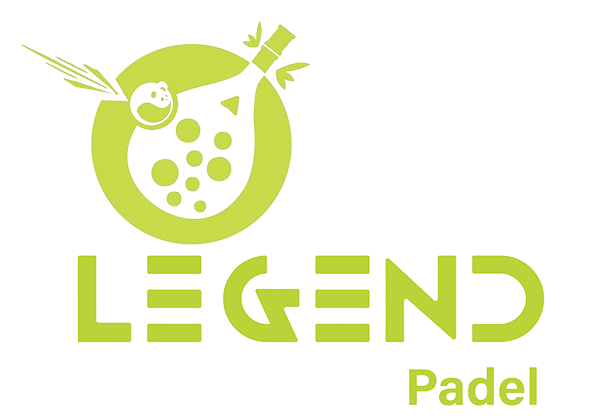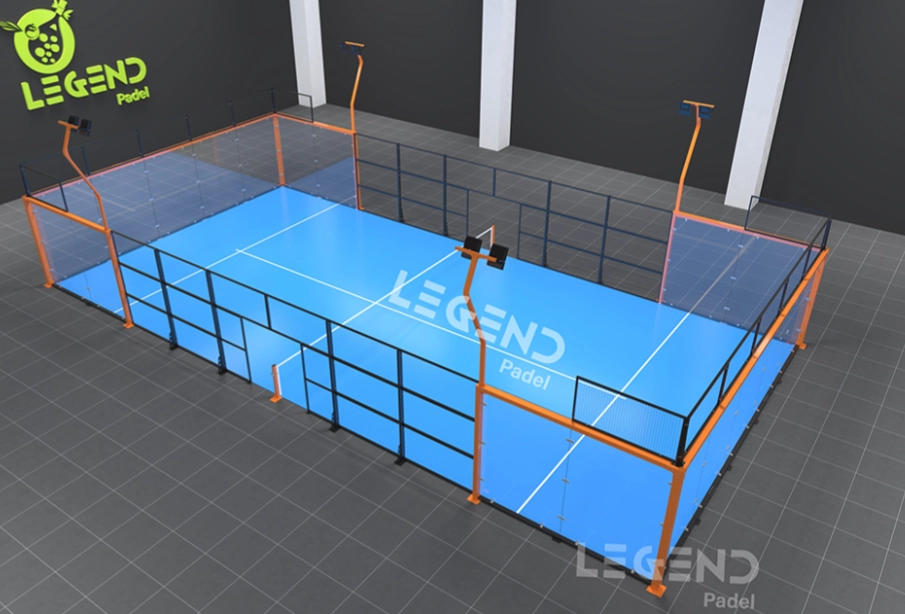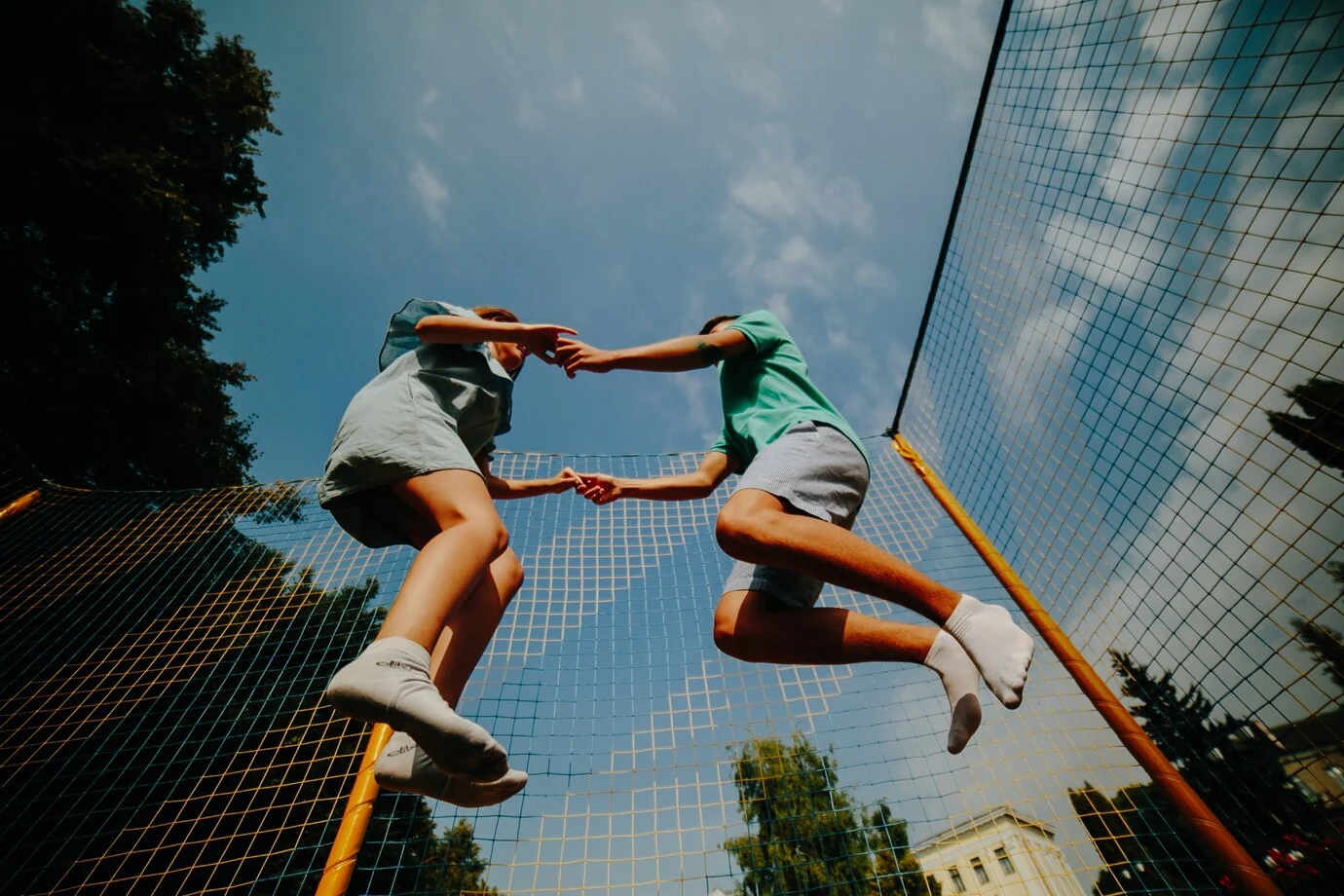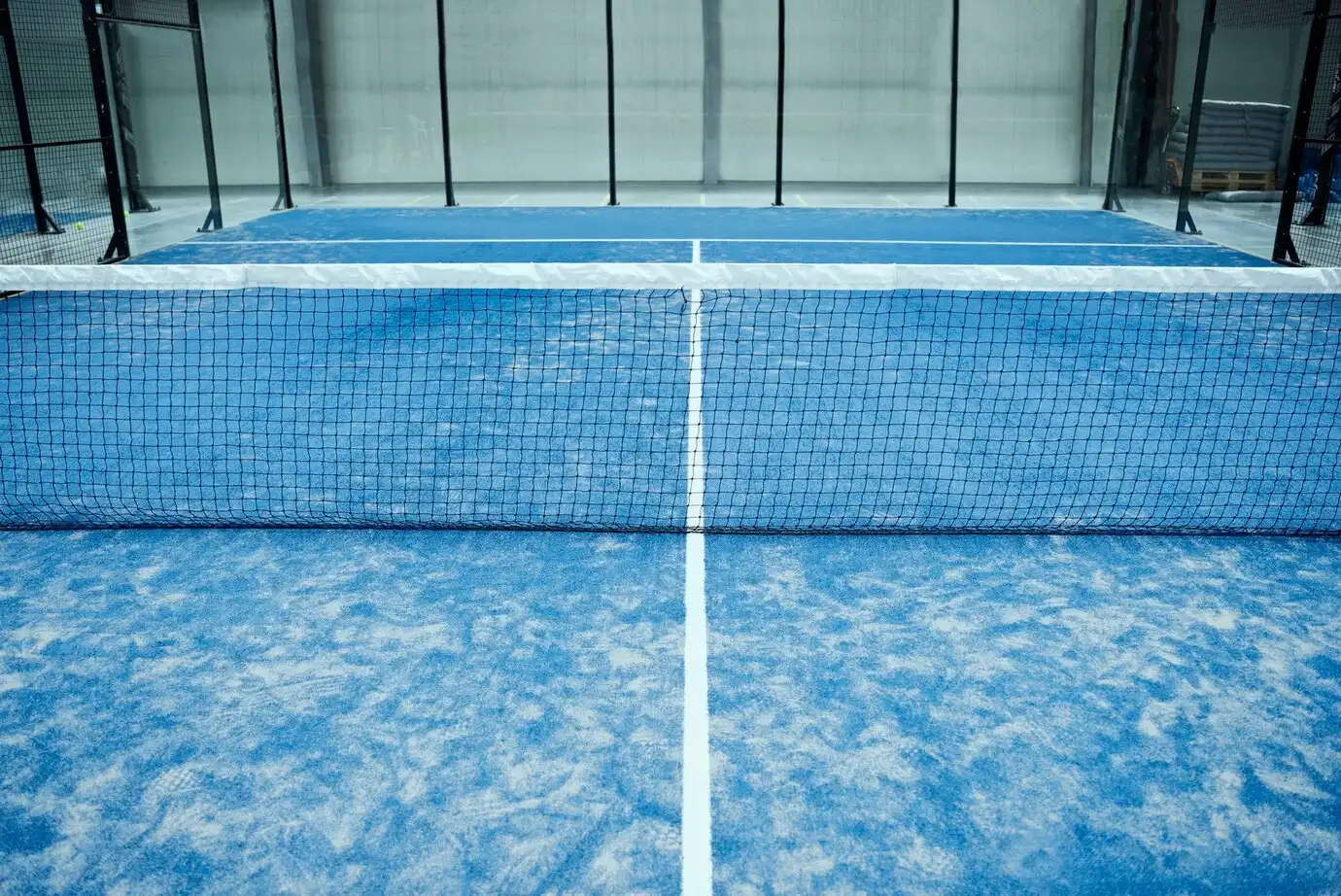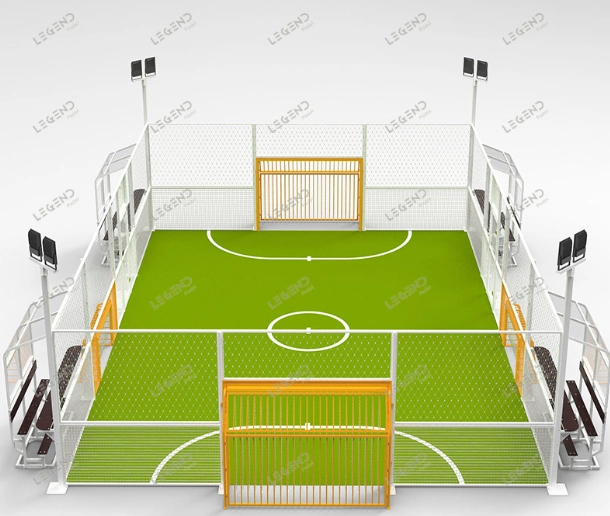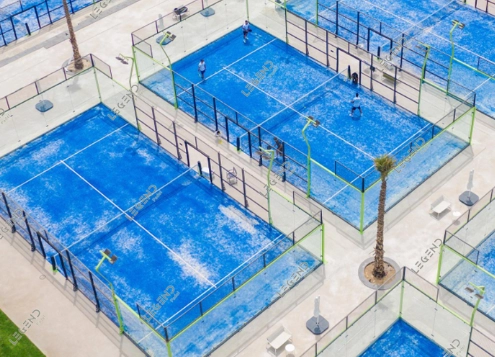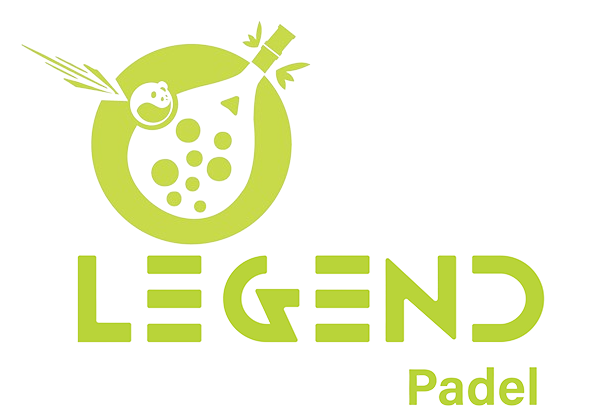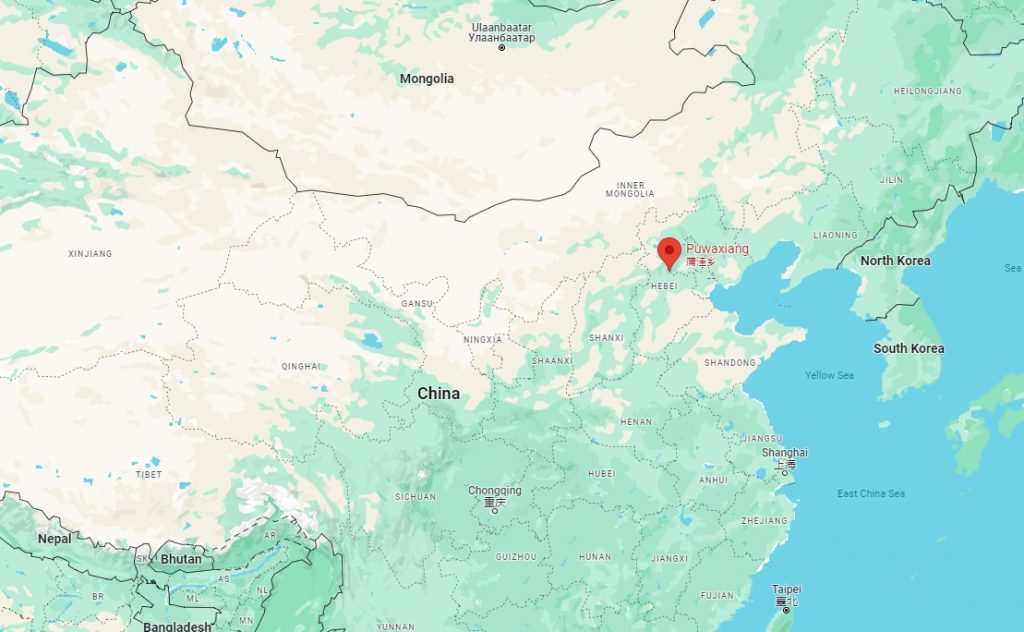Exploring the Structure of Indoor Padel Courts
Indoor padel courts are meticulously designed to provide optimal playing conditions, balancing both functionality and player experience. These courts are characterized by specific structural elements that ensure compliance with official standards and enhance the playing environment.
Key Elements of Indoor Padel Court Design
Playing Surface and Materials
The playing surface of an indoor padel court is of utmost importance for the safety and performance of the players. The surface is usually of synthetic turf providing an even bounce and less chance of injury. Sand is frequently installed into the turf to increase traction and reduce shifting. Materials selected must ensure durability while having a smooth, flat surface to avoid distortion of high-speed capacities.
Wall Construction and Materials
One of the characteristics of padel courts is their walls, which condition playability but also safety. They are typically made of glass. The walls made of glass provide visibility for the spectators while also allowing natural light to enter into the court thus creating an environment of engagement. These walls need to be of a certain thickness and height, to endure hit but also allow for tactical play, ideally.
Net and Post Specifications
In the indoor padel courts, the net divides the playing area into two equal halves; Its dimensions are normally 10 m long and 0.88 m high at the middle, tapering to 0.92 m at the posts. These posts are created to be strong yet compact so as to not block gameplay. The net should be stable and attached to hold up throughout the matches.
Standard Dimensions of Indoor Padel Courts
Court Length and Width Measurements
The size of standard size padel courts are 20 meters long and 10 meters wide when placed indoors. This type of dimension will construct an enclosed place that complements spirited rallies and tactical play. The dimensions facilitate strategic play while maintaining an accessible size for recreational use.
Height and Clearance Requirements
Ceiling Height Considerations
Ceiling height is a crucial factor to consider when designing indoor padel courts, as it can influence both safety and gameplay. Over the whole area of the court, it is advisable to have a height clearance of at least 6 meters. This allows lob shots to be made unimpeded and protects overhead structures from damage while leaving the integrity of competitive play intact.
Side and Back Wall Clearance
In case there are side and back walls, providing adequate clearance is key for keeping players free from injury. If possible, have at least two meters of space outside each wall to ensure that players can retrieve balls without injuring themselves by running into barriers or other walls. That’s at least 2 meters beyond each wall ideally, to allow players to safely slam into the barriers when trying to get to balls without risks of collision injuries from banisters or other objects.
Regulations and Guidelines for Indoor Padel Courts
Official Standards for Competitive Play
The FIP (International Padel Federation) has laid specific guidelines that an official indoor padel court should incorporate. The standards address everything from court size, surface type, and wall construction to net specifications, light levels, and more. Compliance guarantees standardization across venues around the world, so no matter where players compete, they are competing under similar conditions.
Adaptations for Recreational Use
As competitive standards exist only to establish a baseline for professional venues, a recreational indoor padel court could also make adaptations depending on circumstances or requirements. One example of that is different surface materials might be selected and this will certainly effect cost or maintenance but little affect on the playing experience. Some recreational facilities also choose slightly modified dimensions if space is an issue but try to keep the basic aspects of traditional padel.
Familiarity with these structural attributes and their applicable guidelines ensures that indoor padel facilities provide not just form but function as well – leading to spaces where aficionados can play this exhilarating sport safely for everyone from those dabbling at home grounds leading up the national leagues hosted inside purpose-built venues alike! Familiarising oneself with these essential structural elements in accord with such regulatory frameworks enables a seamless construction delivery whereby indoor padel courts uphold both their required functionality & aesthetic aesthetics —making spaces wherein enthusiasts can safely share this exhilarating sport across ambience be it recreational or professional arena alike!
Enhancing the Indoor Padel Experience
Lighting and Visibility Considerations
Proper lighting is an important feature that improves the indoor padel experience through visibility and mood. Proper lighting allows players to see the ball and react quickly in gameplay. Energy efficiency and the ability to provide even illumination over the entire court have led to the popularity of LED systems. The positioning of the lights should be in such a way as to avoid shadows and glare ensuring that players and spectators do not have any visibility issues. Adjustable lighting options can add to the ambiance for specific events or times of day, creating a multi-purpose space for different playing conditions.
Climate Control Features
Climate control is a must to keep playing in adequate conditions with indoor padel courts. Players can perform to the best of their ability without being hindered by heat or cold due to the function of temperature regulation. Today, modern HVACs are installed to ensure uniform temperature and humidity levels, and those play a key role in preserving court material and other equipment regularly used in this setting. However, it is linked to proper ventilation because of the necessary fresh air so that there is no accumulation of moisture & bad smell. This collection of features provides a suitable atmosphere for players and spectators to play and spectate in comfort.
Innovations in Indoor Padel Court Design
Advanced Surface Technologies
Recent developments in surface technologies have achieved a great leap in the quality of indoor padel courts. Modern synthetic turfs have become more durable, shock-absorbing, provide better traction, and reduce the risk of injury all the while encouraging fast-paced action.
Legend Sports: Leading the Way in Padel Court Solutions
Comprehensive Range of Products by Legend Sports
Legend Sports stands at the forefront of padel court innovation, offering a comprehensive range of products designed to meet diverse needs within the sport.
Single Padel Court Options
Legend Sports offers a variety of single padel courts suited for private homes as well as commercial sports development. These courts are built to exact specifications to not just meet international specs but also provide great playability. Depending on the needs of each client, other surface materials and construction style types are available that each provide a solution aligned to your key concept.
Customization Services for Unique Needs
As each client may have specific requirements Legend Sports has a chair of customization of indoor padel courts. It includes custom designs that fit when space is constrained, or the aesthetic prefers things not to be on the visible floor, without sacrificing functionality or safety. From the use of hi-tech technology to specific colours and branding things, Legend Sports works in proximity with clients to manufacture exclusive courts that represent who their clients are, thus, increasing user engagement.
